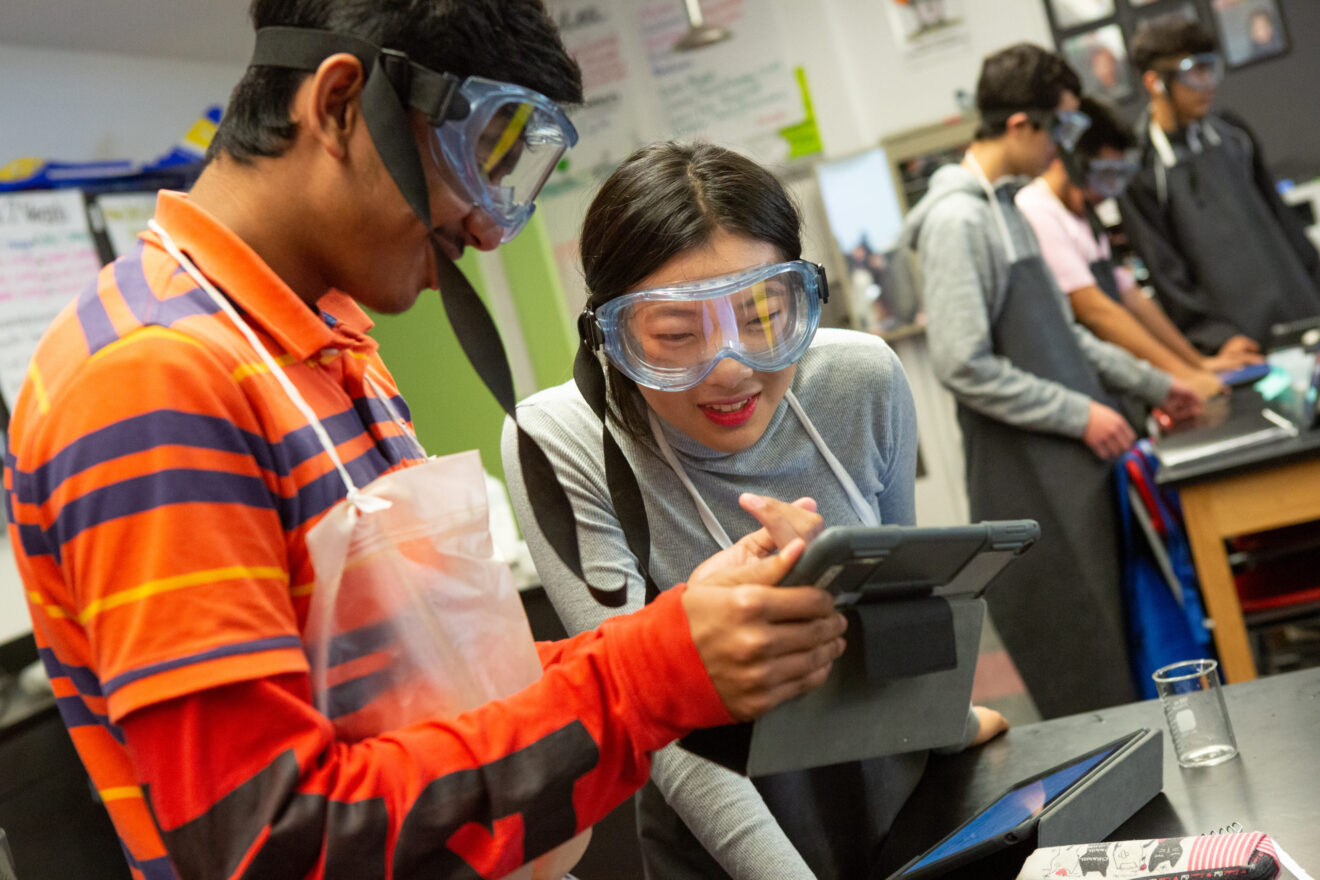As a technology specialist, I’m constantly searching for teachers who are open to bringing new and innovative edtech resources into their classrooms. They’re the ones who give students a goal but don’t dictate how they achieve it. They let kids move around to collaborate rather than insist they stay seated. They help instead of hover. And they often have a loud classroom.

It’s natural for educators to worry that the edtech tools I bring will ratchet up the volume — and that administrators and other teachers may perceive that as lax classroom management. But many educators understand that the volume increases when students are engaged.
“Students need to be leading the discussion,” said Patricia O’Brien-Richardson, an associate professor of teaching at Rutgers University. “We need to get away from the formalized mode of a structure that we grew up with — with the teacher in the front and the students quietly sitting, listening.”
Here are some tips for helping teachers embrace a loud classroom:
1. Communicate why volume signals student engagement
Substantial evidence supports the idea that instruction that develops student ownership and agency enhances learning outcomes. According to the research, when “students are given autonomy in their learning, they are more likely to better develop their 21st-century or ‘character’ skills in critical thinking, problem solving, teamwork, creativity, grit, perseverance, and time management.”
During group projects, interactive games and other hands-on exercises, you can hear the magic happen. In most cases, that doesn’t look like students sitting silently at their desks as a teacher lectures for 40 minutes. It looks like teams presenting their discoveries, the classroom positively buzzing with energy as each awaits their turn to share.
Not even watching should be passive: BrainPOP movies and quizzes can lay the foundation for an engaging lesson by providing background and context. After the movies, I encourage discussion, then invite the kids to create their own movies or coding projects. The classroom reflection that accompanies any effective lesson will necessarily raise the volume, as kids review their work processes and final results.
2. Gain the trust of teachers (and administrators)
Because instructional technologists parachute into classes — sometimes with little or no understanding of a teacher’s classroom management needs — gaining trust should begin with one question: “What do I need to know about your class?”
To help teachers overcome a very normal fear of losing control of their classrooms, I show them the structure and intentionality of the lessons at hand and stress the potential payoff in students’ learning and engagement levels. I also demonstrate respect for their knowledge of the subject matter and their students, and explain that I’m a partner in planning the lesson and delivering the content.
A fourth-grade teacher at one school in my district was excited to begin a tech-centered project but nervous about leaving behind the tried-and-true methodology she had used for 20 years. It required students to work in teams, hold quiet conversations and collaborate online — with the teacher walking around the room to answer questions or move things along. To prepare her, we looked at student-led projects she had tried in the past, making a few tweaks here and there to give her the feeling of being in control while giving students more independence. The result was a slightly louder-than-normal classroom where kids were excited but focused and a teacher became comfortable with letting students direct the pace of their learning.
3. Make having a loud classroom a badge of honor
Teachers and administrators can create a culture that celebrates volume by highlighting classrooms already embracing lively lessons. In my district, we take pictures of students in the midst of these projects and play them on televisions in lobbies or cafeterias. Another strategy is to recognize the teachers at grade-level meetings, then ask them to explain the outcomes. Their peers will note their pride in their students’ accomplishments, and they will want that feeling for themselves.
4. Prioritize time for reflection during and after the project
Loudoun County Schools has made it part of my job to follow up with teachers after my classroom visits. It lets us review the process to understand what worked, what could have used fine-tuning and how the students’ levels of engagement demonstrated learning. It also helps ensure that the edtech aligns with the curricula.
When we first meet, we’ll discuss how the tool is embedded in the lesson. At the midpoint, we revisit to ensure that the tool is supporting the content and not becoming the focus as students discover the bells and whistles. The tools we use must stay within the parameters of the lesson so the edtech portion supports the goal rather than becomes it.
5. Help administrators see the value of energized students
Some administrators see edtech tools as quiet, passive classroom additions, but today’s interactive resources can open a door to enlightening conversations, more hands-on instruction and student-led learning — and loud classrooms. That requires a mindset shift among administrators as much as teachers. Explaining the value of technology-driven, interactive lessons to administrators on the front end is a surefire way to position a somewhat noisy classroom. If an administrator still isn’t convinced, invite her to meet with students to ask what they’re doing, why they’re doing it and what they’re learning.
I recently worked in a classroom where students were building structures to protect an ancient Egyptian civilization using Lego bricks that were coded to move. The teacher discussed her lesson with administrators beforehand, explaining how it connected to content, its social and emotional learning goals and the 5 C’s (critical thinking, creative thinking, communication, collaboration and citizenship skills). She told them students can test, evaluate and make improvements, which will build resilience and critical thinking skills. The results were incredible: One group created a Ferris wheel-like machine, replacing the seats with long boats to save ancient Egyptians from tsunamis.
Managing a lively group of students in a loud classroom is nothing educators should fear; it’s a skill that can actually make teaching more fun and gratifying. Students who are talking, laughing or even cheering are students who are happy and engaged, and that’s something every teacher should encourage. Openness to the idea is the only prerequisite. With help, any teacher can create a more student-centered classroom, one small step at a time.
Julie Kuzma is the instructional facilitator of technology for the Loudoun County School District in Virginia. Kuzma’s tools include BrainPOP and Lego bricks.
Opinions expressed by SmartBrief contributors are their own.
_________________________
Subscribe to SmartBrief’s FREE email newsletter to see the latest hot topics on EdTech. It’s among SmartBrief’s more than 250 industry-focused newsletters.
